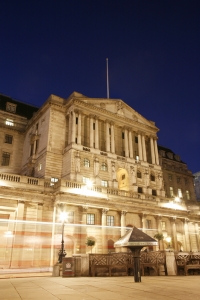Banks That Could Pose Global or Domestic Risk Could Face Tougher Lending Rules

Banks will be held to stricter rules regarding lending but the guidelines weren’t as strict as many expected. The news of the Bank’s requirement upon banks and building societies being less of a strangle-hold than expected led to stocks rebounding Friday. However, before the imposition of 3% leverage ratio across the banking sector, Chancellor George Osborne wants an assessment as to the impact the rules will have on lending before the Bank of England can tighten the ratio rules any further.
Should the banks and building societies be forced to hold more capital against their lending levels, then lenders would more than likely begin to raise their standard variable rates as well as the mortgage and remortgage products on the market in an effort to tighten lending.
The Bank of England is requiring that the largest banks hold 3p of capital for every £1 they lend out. This means a 3% leverage ratio is imposed across the industry. Many have already been operating on their own accord as to this safety level for lending but imposing stricter rulings could be a game changer for lenders as well as borrowers.
Policy makers were warned by the Building Societies’ Association that higher costs of mortgage borrowing would be the outcome if a tougher stance was issued against lenders.
The Financial Policy Committee (FPC) desires to impose stricter ratios for banks that would cause a risk to the global financial system such as Barclays, Royal Bank of Scotland, HSBC and Standard Chartered or for those that pose a domestic financial risk such as Lloyds Baking Group and Nationwide. The ratios of the global economic risk banks would be higher than the 3% and more likely between 3.3% and 3.9%, while domestic banks and building societies could be held accountable to a ratio of 4% or more. The requirements could be implemented to begin in 2016.
Osborne had hoped another layer or component to the current system would be added by the review of the current leverage ratio but insists more work needs to be done to understand the full impact of increasing the ratio on lending and borrowing. Lenders however are likely to begin plans toward such increases occurring and lending therefore could become tighter and borrowers will face higher interest rates even before the Bank of England increases the standard base interest rate. The change will not be drastic or perhaps even well noticed in the beginning but banks are planning to face higher leverage ratios in case it does occur and borrowers should be aware of the change occurring.



